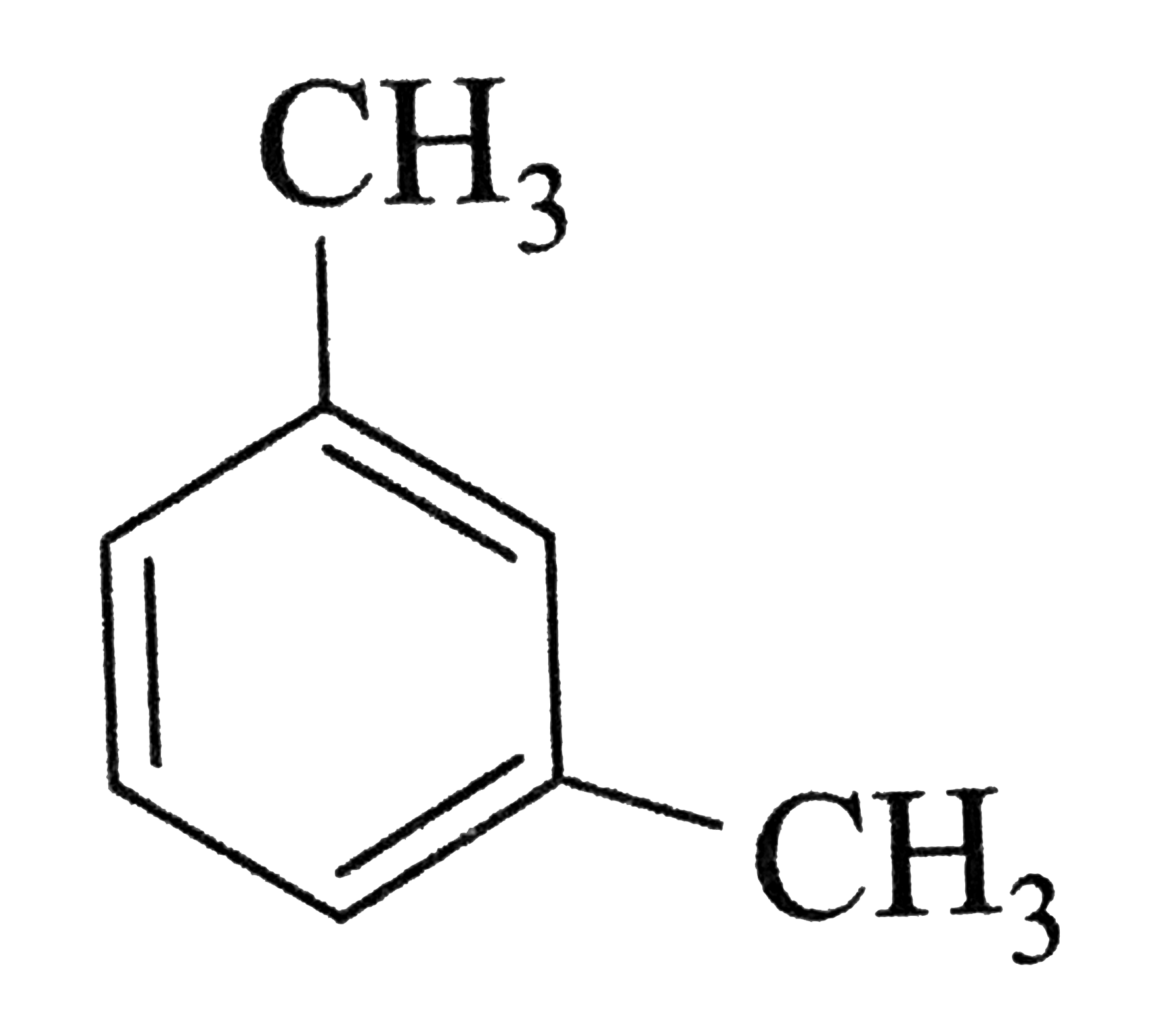Complete Solutions to Multiple choice of chapter HALOALKANES AND HALOARENES of Class 12 book with complete answers and questions
| Class 12 | CHEMISTRY |
| Chapter | HALOALKANES AND HALOARENES |
| DINESH COMPANION CHEMISTRY | Multiple choice |
| Number Of Questions | 47 |
| Academic Year | 2023-24 |
Which of the following is a free radical substitution reaction?
View SolutionAllyl chloride on dehydrochlorination gives:
View SolutionWhich of the following undergoes nucleophilic substitution exclusively by `S_(N^(1))` mechanism?
View SolutionThe major product formed in the reaction is:
`CH_(3)-underset(H)underset(|)overset(CH_(3))overset(|)(C)-CH_(2)Brunderset(CH_(3)OH)overset(CH_(3)O^(Ө))to`
View SolutionFor the following
`(i) I^(-) (ii) Cl^(-) (iii) Br^(-)`
the increasing order of nucleophilicity would be:
View SolutionIn a `S_(N)2` substitution reaction of the type
`R-Br+Cl^(-) overset("DMF")toR-Cl+Br^(+)`
which one of the following has the highest relative rate?
View SolutionPredict the product 'C' in the following reaction of but-1-ene.
`underset((A))(CH_(3)-CH_(2)-C-=CH+HCltoBoverset(HI)toC)`
View SolutionThe additio of HBr to but-1-ene gives a mixture of products (I),(II) and (III).
 .
.
(III). `CH_(3)-CH_(2)-CH_(2)-CH_(2)-Br`.
Mixture consists of
View SolutionThe correct order of increasing reactivity of `C-X` bond towards nucleophile in the following compounds is:
 .
.
View SolutionWhich one is the most reactive towards `S_(N^(1))` reaction?
View SolutionWhich is a nucleophilic substitution reaction among the following?
View SolutionThe compound which does not undergo hydrolysis by `S_(N^(1))` mechanism is:
View SolutionConsider the reaction:
(i). `(CH_(3))_(2)CH-CH_(2)Broverset(C_(2)H_(5)OH)to(CH_(3))_(2)CH-CH_(2)-O-C_(2)H_(5)+HBr`
(ii). `(CH_(3))_(2)CH-CH_(2)Broverset(C_(2)H_(5)O^(-))to(CH_(3))_(2)CH-CH_(2)-OC_(2)H_(5)+Br^(-)`
The mechanisms of reaction (i) and (ii) are respectively.
View SolutionIn the following sequences of reaction
`CH_(3)Broverset(KCN)toAoverset(H_(3)O^(+))toBunderset(ether)overset(LiAlH_(4))toC` The end product (C) is.
View SolutionIn the replacement reaction
`gtunderset(|)(C)-I+Mfto gt underset(|)(C)-F+MI`
the reaction will be most favourable if M happens to be
View SolutionWhich of the following alkyl halides has the lowest boiling point?
View Solution2,4,6-trinitrochlorobenzene on warming with water produces:
View SolutionWurtz reaction of methyl iodide yields an organic compound X. Which of the following reaction also yields X?
View SolutionWhat products are formed when the following compounds are treated with `Br_(2)` in the presence of `FeBr_(3)` ?

View Solution`RCl+NaI overset("Acetone")rarr R-I+NaCl`
This reaction is known as
View SolutionTwo possible stereo-structures of `CH_(3)CHOHCOOH`, which are optically active are called
View SolutionIn the reaction with HCl, an alkene reacts in accordance with the markovnikov's rule to give a product 1-chloro-1-methylcyclohexane. The possibel alkene is
View SolutionIn an `S_(N^(1))` reaction on chiral centres, there is
View SolutionThe reaction ltBrgt `CH_(3)-underset(CH_(3))underset(|)overset(CH_(3))overset(|)(C)-ON a+CH_(3)CH_(2)Cloverset(-NaCl)toCH_(3)-underset(CH_(3))underset(|)overset(CH_(3))overset(|)(C)-O-CH_(2)-CH_(3)` is called.
View SolutionThe reaction of `C_(6)H_(5)CH=CHCH_(3)` with HBr produces
View SolutionIn which of the following compounds, the `C-Cl` bond ionisation shall give most stable carbocation ion?
View SolutionWhich one of the following organohalogen compounds when heated with alcoholic potassium hydroxide does not undergo dehydrohalogenation reaction?
View SolutionWhich of the following biphenyls is opticaly active?
View SolutionFor the following reactions: (A). `CH_(3)CH_(2)CH_(2)Br+KOHoverset((alc))toCH_(3)CH=CH_(2)+KBr+H_(2)O`
(B).
Which of the following statements is correct?
View SolutionThe correct order of the reactivity of the following compounds towards nucleophilic substitution in the following compounds is
 .
.
View Solutionconsider the reaction
`CH_(3)CH_(2)CH_(2)Br+NaCNtoCH_(3)CH_(2)CH_(2)CN+NaBr`.
the reaction will be fastest in.
View SolutionWhich of the following can be used as halide component for Friedel-Crafts reaction?
View SolutionBromination of trans but-2-ene leads to the formation of
View SolutionThe compound `C_(7)H_(8)` undergoes the following reaction.
`C_(7)H_(8)overset(3Cl_(2)//Delta)toAoverset(Br_(2)//Fe)toBoverset(Zn//HCl)toC`
The product C is
View SolutionThe decreasing order of `S_(N^(2))` reaction for the given compounds is
 .
.
View SolutionThe correct order of reactivity in `S_(N^(1))` reaction for the following compounds is
(i). `CH_(3)-underset(Cl)underset(|)(C)H-CH_(2)-CH_(3)`
(ii). `Ph-underset(Cl)underset(|)(C)H-CH_(2)-CH_(3)`
(iii). `CH_(3)-underset(OC H_(3))underset(|)overset(Cl)overset(|)(C)-CH_(3)`
(iv). `CH_(3)-CH_(2)-CH_(2)-Cl`
View SolutionAn alkyl bromide produces a single alkene when it reacts with sodium ethoxide and ethanol. The alkene undergoes hydrogenation and produces 2-methylbutane. What is the identity of the alkyl bromide?
View Solution`CH_(3)-underset(CH_(3))underset(|)(CH)-CH=CH_(2)+HBr to 'A'`
'A' (predominantly) is:
View SolutionIn a set of reaction, ethyl benzene yielded a product D.

The product D would be
View SolutionIn alkaline hydrolysis of a tertiary halide by aqueous alkali, if concentration of alkali is doubled, then the reaction rate
View SolutionAn alkyl halide with molcular formula `C_(6)H_(13)Br` on dehydrohalogenation gave two isomeric alkenes X and Y with molecular formula `C_(6)H_(12)`. O reductive ozonolysis, X and Y gave four compounds `CH_(3)COCH_(3),CH_(3)CHO,CH_(3)CH_(2)CHO` and `(CH_3)_(2)CHCHO`. the alkyl halide is.
View SolutionWhich one of the following is most reactive towards nucleophilic substitution reaction ?
View Solution
The major product (A) of the following reactions is:
View SolutionThe products expected to be formed in the wurtz reaction of a mixture of neopentyl bromide and isobutyl bromide are
(i). 2,2,4-trimethylpentane
(ii). 2,2,5,5-tetramethylhexane.
(iii). 2,2,4,4-tetramethylhexane
(iv). 2,5-dimethylhexane
(v). 2,2,5-trimethylhexane.
View SolutionThe major organic products in the given reaction.
 .
.
View SolutionWhich one of the following does not show optical activity ?
View SolutionIdentify A and predict the type of reaction.

View Solution
Multiple choice questions and complete solutions for chapter HALOALKANES AND HALOARENES of S DINESH & CO CHEMISTRY (HINGLISH) of Class 12
All Exercises from DINESH COMPANION CHEMISTRY Class 12 CHEMISTRY HALOALKANES AND HALOARENES
- Additional important questions
- Assertion-Reason Type
- Assignment
- Brain storming multiple choice questions
- Comprehension
- Example
- Haloarenes
- Higher Order Thinking Skills Questions
- Integer
- Jee Main & Other Enginnering Entrance Examination
- Long Answer type Question
- Matrix
- Multiple choice
- NCERT
- Problem for practice
- Question From board Examinations
- Short Answer Type Questions
- Single correct option
- Some typical work problems based on coversions
- Straight Objective type